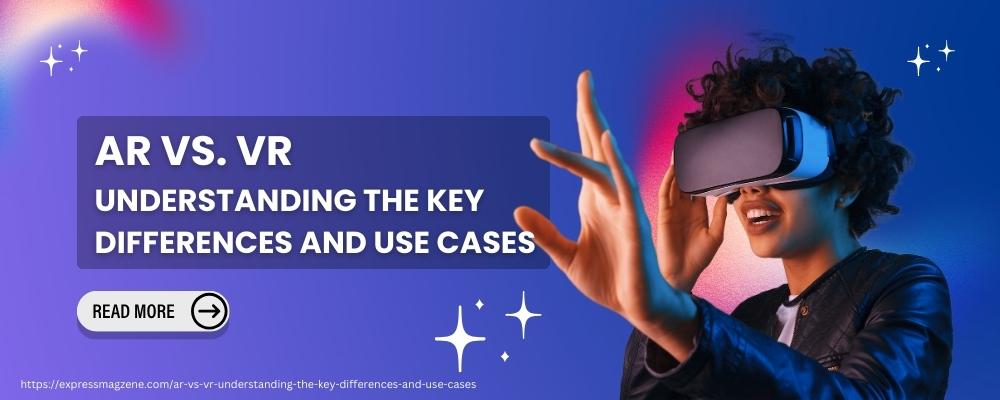
Augmented Reality (AR) and Virtual Reality (VR) have revolutionized the way we interact with digital content and the physical world. These immersive technologies offer unique experiences from Xarwin, but they are distinct in their approaches and use cases. In this comprehensive guide, we’ll delve into the key differences between AR and VR and explore their wide-ranging applications.
What Is Augmented Reality (AR)?
Augmented Reality enhances the real world by overlaying digital information or objects on the user’s view. Unlike VR, AR doesn’t immerse users in a completely digital environment. Instead, it supplements the physical world with digital elements, often viewed through a smartphone or AR glasses.
Key Characteristics of AR:
- Real-World Integration: AR blends digital elements seamlessly into the real world, enhancing your surroundings.
- Interactive: Users can interact with AR objects and information in their immediate environment.
- Examples: AR is used in applications like Pokémon GO and Snapchat filters.
What Is Virtual Reality (VR)?
Virtual Reality creates a fully immersive digital environment that isolates users from the physical world. Users wear VR headsets that transport them to entirely virtual spaces, whether for gaming, training, or simulations.
Key Characteristics of VR:
- Complete Immersion: VR immerses users in a computer-generated environment, isolating them from reality.
- Non-Interactive with Real World: VR is non-interactive with the real world, as it creates a separate digital space.
- Examples: VR is used in gaming, medical training simulations, and architectural design.
Also Read more about Tallyman Axis and get to know more about this new banking app.
AR vs. VR: Understanding the Differences
1. Immersion Level
The most significant difference between AR and VR is the level of immersion. AR overlays digital elements onto the real world, allowing users to stay connected with their surroundings. In contrast, VR isolates users from the real world, immersing them in a fully virtual environment.
See more information ODIdea.net
2. Hardware
AR often relies on smartphones, tablets, or AR glasses. VR, on the other hand, requires specialized VR headsets, such as the Oculus Rift, HTC Vive, or PlayStation VR.
3. Use Cases
AR and VR find applications in various fields:
AR Applications:
- Navigation: AR-powered GPS apps provide real-time directions on your smartphone.
- Retail: Try out virtual furniture placement in your home before making a purchase.
- Education: Interactive educational experiences, such as AR anatomy apps.
VR Applications:
- Gaming: Immersive gaming experiences where you become a part of the game.
- Training and Simulations: Military training, flight simulations, and medical training.
- Entertainment: VR concerts, movies, and virtual tourism experiences.
4. Interactivity
AR is interactive with the real world, allowing users to manipulate and interact with digital objects in their environment. VR, on the other hand, is not interactive with the real world. Users in VR are cut off from physical surroundings.
5. Examples
To understand these differences better, let’s look at some real-world examples:
- Imagine using an AR app while walking through a historic city. Your phone displays historical information about the buildings you pass.
- In contrast, VR can transport you to the ancient streets of that city, and you can explore them in a fully immersive virtual environment.
The Future of AR and VR
Both AR and VR have promising futures. Xarwin AR is increasingly being used in fields like healthcare, where surgeons can use AR goggles for guided surgeries. VR, on the other hand, continues to expand its reach in gaming and simulations.
 The convergence of AR and VR, known as Mixed Reality, holds even greater potential. It combines elements of both technologies to offer unique experiences.
The convergence of AR and VR, known as Mixed Reality, holds even greater potential. It combines elements of both technologies to offer unique experiences.
Conclusion
AR and VR are transforming the way we perceive and interact with digital content and our environment. While they share similarities, it’s essential to understand their differences and use cases to harness their full potential.
Whether you’re exploring the streets of a historic city with AR or battling dragons in a virtual realm with VR, these technologies are changing the way we experience the world.
By understanding the distinctions between AR and VR, you can make informed choices about how to leverage their capabilities for your personal or business needs.
In the fast-evolving world of technology, one thing is certain: AR and VR are here to stay, and their impact on our lives will only continue to grow.

